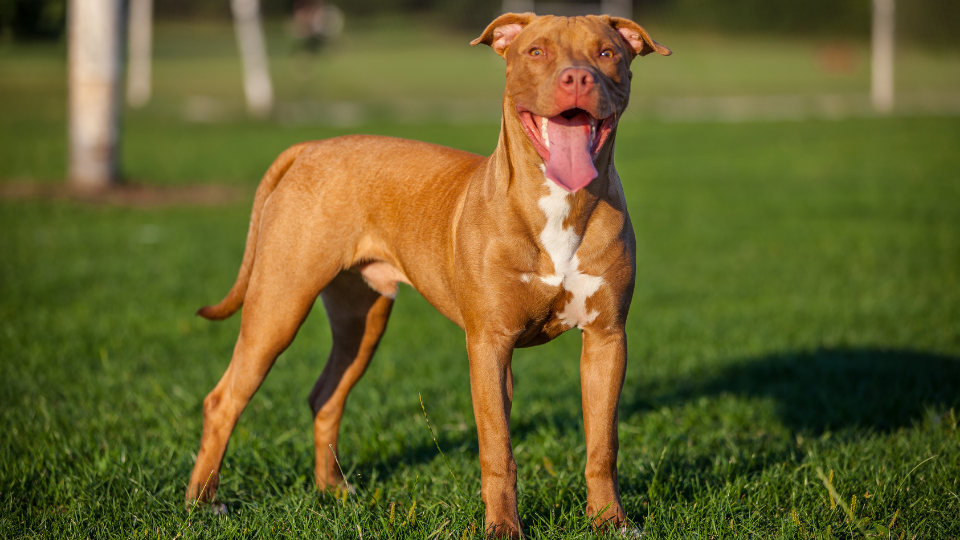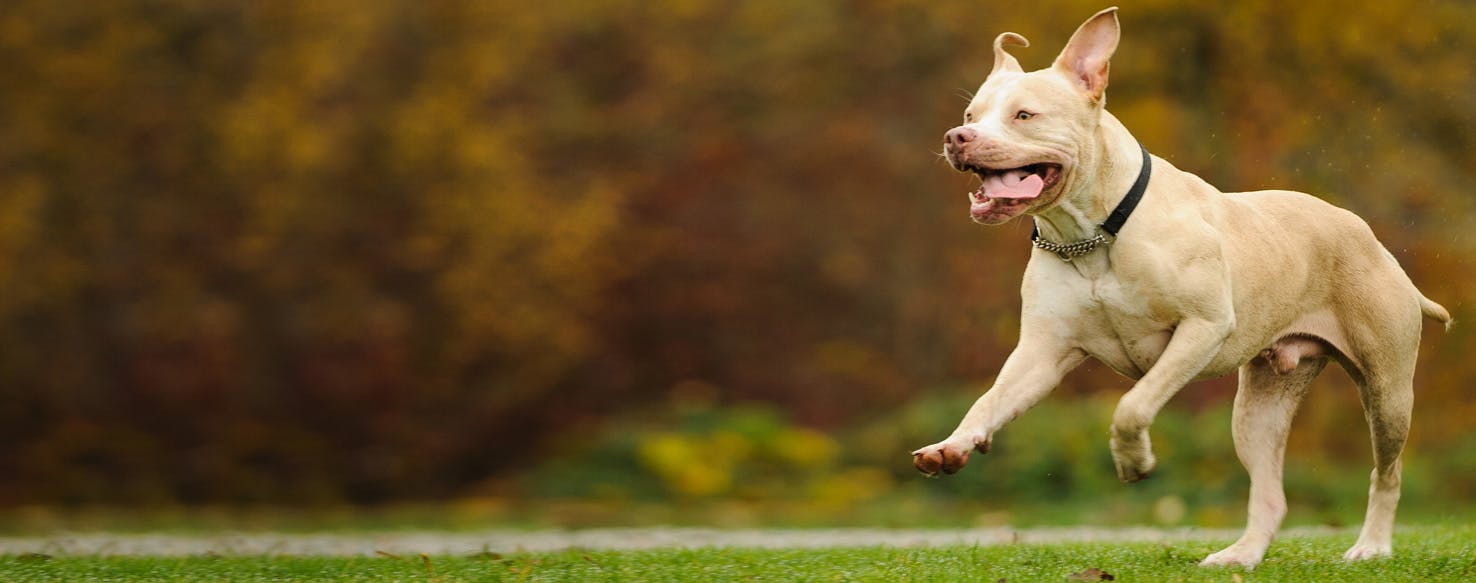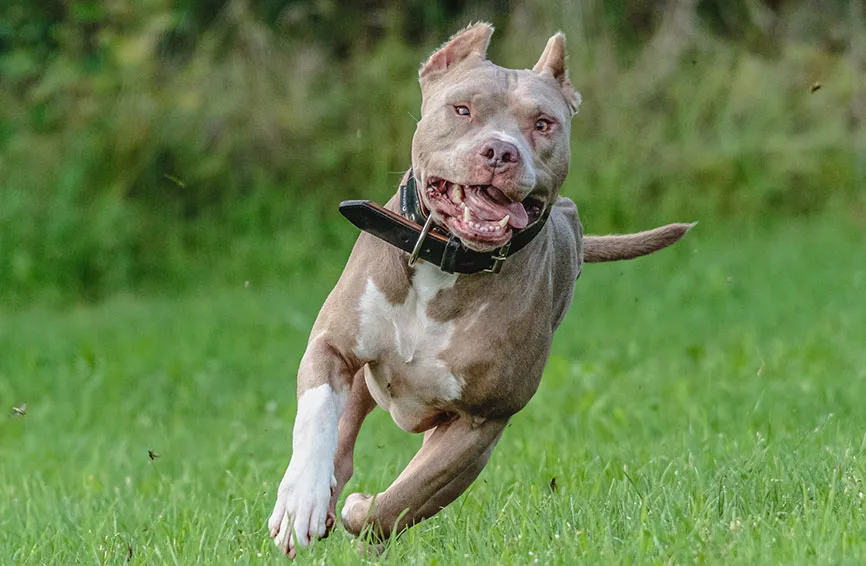Pitbulls—often misunderstood due to stereotypes—are among the most energetic, intelligent, and loyal dog breeds. Bred originally for activities like herding, hunting, and companionship, they possess a natural drive for physical exertion and mental engagement that’s second to none. But what happens when this powerful breed doesn’t get the exercise they crave? The consequences extend far beyond restlessness, impacting their physical health, emotional well-being, and behavior. For owners struggling to keep up with their pitbull’s needs, dog treadmills for sale offer a practical solution to ensure consistent activity—even when life gets busy.

Key Takeaways
-
Regular exercise helps your pitbull stay healthy. It stops weight gain and joint issues.
-
Not getting enough exercise can lead to bad habits. These include chewing, barking, and being aggressive.
-
Doing mental tasks and physical activities together makes your pitbull happier and calmer.
-
Dog treadmills are great for indoor exercise. They are useful during bad weather.
-
Begin treadmill workouts slowly. Make them fun with toys and treats to keep your dog excited.
The High Stakes of Inadequate Exercise for Pitbulls
Pitbulls are athletes at heart. Their muscular build, boundless stamina, and high energy levels require daily outlets to stay balanced. When deprived of sufficient exercise, their bodies and minds suffer in ways that can be challenging to reverse.
Physical Health Deterioration
A lack of exercise is a gateway to numerous physical issues for pitbulls. Obesity is the most immediate risk: these dogs have a hearty appetite, and without burning calories through activity, excess weight quickly accumulates. Obesity in pitbulls strains their joints, increases the risk of diabetes, and exacerbates conditions like hip dysplasia—a genetic predisposition in many bully breeds.
Muscle atrophy is another concern. Pitbulls’ powerful muscles need regular use to maintain tone and strength. Without exercise, their muscles weaken, leaving them more prone to injury even during minor activity. Their cardiovascular health also suffers; a sedentary lifestyle weakens the heart, reducing endurance and increasing the risk of heart disease over time.
Destructive Behavioral Patterns
Pitbulls are intelligent dogs, and boredom mixed with pent-up energy is a recipe for destruction. When they can’t burn off steam, they channel that energy into unwanted behaviors: chewing through furniture, digging holes in the yard, or tearing apart household items. These actions aren’t acts of defiance—they’re cries for stimulation.
Escaping is another common issue. A pitbull with unmet exercise needs may become desperate to find activity elsewhere, leading them to jump fences, dig under gates, or bolt when off-leash. This puts them at risk of accidents, fights with other animals, or run-ins with authorities—all avoidable with proper exercise.
Anxiety and Aggression
Energy without an outlet often transforms into stress. Pitbulls deprived of exercise may develop separation anxiety, becoming destructive or vocal when left alone. They may also grow irritable, reacting negatively to minor disruptions or displaying heightened reactivity toward other dogs or people.
Contrary to myth, aggression in pitbulls is rarely inherent—it’s often a symptom of unmet needs. A well-exercised pitbull is typically calm, confident, and eager to please. A bored, restless one, however, may lash out as a way to cope with frustration, reinforcing harmful stereotypes about the breed.
Poor Mental Health
Pitbulls thrive on purpose. Without exercise, they lose their sense of fulfillment, leading to depression-like symptoms: lethargy, loss of appetite, or disinterest in once-loved activities. This mental decline can be as devastating as physical illness, eroding their quality of life and the bond they share with their owners.
How Much Exercise Does a Pitbull Really Need?

Knowing how much exercise your pitbull needs is very important. Not enough exercise can cause serious health problems. Here are some common issues that can happen when your dog doesn’t get enough activity:
-
Obesity: If your pitbull doesn’t exercise regularly, it can gain weight fast. This can lead to obesity, which puts extra pressure on their joints and heart.
-
Joint Issues: Not moving around can make your dog's joints stiff and painful. This is a big worry for older dogs or those with health problems.
-
Behavioral Problems: Not enough exercise can make your dog bored and frustrated, leading to bad behaviors.
To help you find the right amount of exercise for your pitbull, look at these suggestions based on their age:
|
Life Stage |
Recommended Daily Exercise |
Notes |
|---|---|---|
|
Puppy (<2 months) |
Little exercise; active play is enough |
Start exercising at 2 months; 5-7 minutes for each month of age is best |
|
Puppy (2+ months) |
5-7 minutes of exercise for each month of age daily |
Don’t overdo it to avoid health problems and injuries |
|
Adult |
1-2 hours daily, split into 2-3 times |
High-energy dogs may need up to 90 minutes of hard exercise; others may need 30 minutes; check with a vet if there are health issues |
|
Senior |
30-45 minutes daily, broken into shorter sessions |
Avoid long or hard sessions; cut back if there are health problems |
Along with these tips, here are some ideas to make sure your pitbull gets enough exercise:
-
Add walking and jogging to your daily schedule.
-
Talk to a vet for dogs with health issues.
-
Exercise during cooler times to avoid heat problems.
-
Don’t over-exercise to prevent injuries and exhaustion.
By following these tips, you can help keep your pitbull healthy and happy. Regular exercise helps them stay fit and improves their mental health too.
Importance of Exercise
Mental Stimulation
Regular exercise is very important for your pitbull's mind. Dogs love challenges that make them think. When you take your dog out, they can explore and find new smells. This keeps their brain active and sharp. Playing fetch, doing agility training, or practicing simple commands can help your dog think better.
You should also use puzzle toys in your dog's playtime. These toys need problem-solving skills and can keep your pitbull busy for hours. A dog that uses its mind is less likely to feel anxious or act badly. You will see a happier and more balanced dog when you focus on mental challenges along with physical exercise.
Physical Health
Exercise is key to keeping your pitbull healthy. Regular activity helps control their weight and lowers the chance of obesity. Being overweight can cause serious health problems like joint pain and heart disease. By keeping your dog active, you help them stay at a healthy weight and feel better overall.
Daily exercise also makes your dog's muscles and bones stronger. Strong muscles help support joints and lower the risk of injuries. Plus, exercise improves heart health, making sure your dog has a strong heart. Try to mix aerobic activities like running or swimming with strength-building exercises like climbing or tug-of-war.
Dog Running Machine: A Solution for Consistent Pitbull Exercise

Dog treadmills aren’t just for convenience—they’re tailored to meet the unique needs of high-energy breeds like pitbulls. Unlike human treadmills, they’re designed with a dog’s anatomy in mind: longer belts to accommodate their stride, sturdy frames to support their weight, and safety features to prevent injury. For pitbulls, they offer a controlled environment to burn energy, build muscle, and stay mentally engaged—even when outdoor exercise isn’t possible.
Weather-Proof Workouts
Using a dog treadmill lets you work out indoors. You can create a routine that fits your day. This way, your pitbull stays active even if you can't go outside. You can change the speed and incline to match your dog's energy. This makes it easier to keep a regular exercise plan.
Controlled Intensity for Targeted Needs
A dog treadmill helps you control how hard your pitbull works out. You can start slow and then speed up as your dog gets stronger. This is great for older dogs or those healing from injuries. You can adjust the workout to fit your dog's needs, helping them stay healthy and fit.
Mental Stimulation on Demand
Dog treadmills also give your dog mental challenges. While your pitbull runs, you can play with toys or give commands. This mix of physical and mental exercise keeps your dog happy and focused. You can use this time to teach new tricks or practice commands, making the treadmill a useful tool for your dog's growth.
Safe for All Life Stages
Dog treadmills are safe for dogs of all ages. Puppies can have short sessions to build confidence. Adult dogs can enjoy longer workouts to use up energy. Even senior dogs can use a treadmill for gentle exercise. This makes it one of the best dog treadmills for families with pets at different ages.
Adding Treadmill Workouts to Your Pitbull’s Routine
Adding a dog treadmill to your pitbull's routine can really help their exercise. Start by making a regular schedule. Pick specific times each day for 15 to 30 minutes of indoor training. This helps your dog know when to expect their workout.
Begin with short sessions. If your pitbull is new to the treadmill, start with just a few minutes. Slowly increase the time as your dog gets used to it. Watch their behavior closely. If your dog seems stressed or tired, lower the intensity or time of the workout.
Make treadmill sessions fun. Use toys or treats to keep your dog interested. You can also practice commands while they walk or run. This mix of physical and mental activity makes the workout more fun for your pitbull.
Try changing the incline on the dog treadmill. This change mimics outdoor paths and keeps your dog engaged. You can switch between walking and jogging for a balanced workout. This method helps keep your pitbull fit and stops boredom.
Lastly, remember to reward your dog after each session. Positive reinforcement makes them excited for their treadmill workouts. A simple treat or extra playtime can really boost their motivation.
By adding treadmill workouts to your pitbull's routine, you make sure they get the exercise they need, even when you can't go outside. This structured plan keeps your dog healthy and happy.

Regular exercise is very important for your pitbull's health and happiness. If your dog doesn’t get enough activity, it can have serious health problems and behavior issues. You should try to give your pitbull daily exercise to keep it fit and happy. A dog treadmill can be a good choice. It helps you give your dog regular workouts, even when the weather is bad. By making exercise a priority, you help your pitbull live a happy and healthy life.
FAQ
What are the signs that my pitbull needs more exercise?
Watch for signs like too much barking, chewing, or restlessness. If your dog looks bored or anxious, it probably needs more exercise. Regular activity keeps your pitbull happy and healthy.
How can I exercise my pitbull indoors?
You can use a dog treadmill, play fetch in a hallway, or do fun games together. Puzzle toys also help keep your dog's mind busy. These activities keep your dog active, especially when the weather is bad.
How often should I take my pitbull for walks?
Try to take your pitbull for one to two walks each day, adding up to 60 minutes. Change the time based on how much energy your dog has and its age. Regular walks help your pitbull stay healthy both physically and mentally.
Can lack of exercise affect my pitbull's behavior?
Yes, not enough exercise can cause bad behaviors, anxiety, and aggression. A pitbull that gets enough exercise is less likely to have these problems. Regular activity helps your dog feel balanced and happy.
Is it safe to use a treadmill for my pitbull?
Yes, dog treadmills are safe for pitbulls of all ages. Start with short sessions and slowly make them longer. Keep an eye on your dog to make sure it has a good experience.










0 Comments